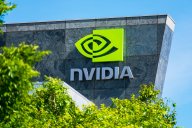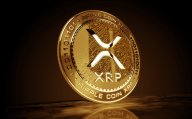
Nvidia stock forecast: Third-party price target
Discover third-party Nvidia stock forecast predictions for 2025-2030 and beyond, with analyst targets, historical prices, and trading strategies.
15:41, 11 July 2025

Trading Bitcoin's all-time high in July
Breakout in price finally sees $118,000, keeping technicals bullish in both daily and weekly time frames.
10:16, 11 July 2025

Tesla stock forecast: third-party Tesla (TSLA) price target
Discover the Tesla (TSLA) stock price forecast, with predictions, price drivers, and Tesla CFDs trading strategies on Capital.com
12:42, 10 July 2025

Ripple XRP price prediction: Third-party price target
Discover the ripple (XRP) price predictions for 2025 and beyond, with analyst price targets and CFDs trading strategies on Capital.com
16:25, 8 July 2025

Ethereum price prediction: Third-party price target
Your Ethereum price prediction resource for 2025 onward, with analyst outlooks, price targets and CFD trading strategies on Capital.com
13:52, 8 July 2025

Euro forecast: Third-party price target
Read our EUR/USD forex rate forecast for 2025 and beyond, with insights from third-party analysts and market experts
12:06, 4 July 2025

Bitcoin price prediction: Third-party price target
We examine bitcoin price predictions for 2025 and beyond, with insights from third-party analysts and market experts.
11:10, 4 July 2025

Trading the S&P 500: Bracing for Non-Farm Payrolls
Another record high yesterday, with gains in the futures market taking it beyond 6,230.
09:31, 3 July 2025

Trading Nasdaq 100’s fresh record high
Progress on the trade front, easing geopolitical tensions, and ‘revenge tax’ removed sees risk appetite improve.
11:02, 30 June 2025

Capital.com expands industry engagement as it joins Innovate Finance and the London Chamber of Commerce and Industry
Memberships signify commitment to actively participate in the development and transformation of the UK’s financial and technology sectors.
09:11, 30 June 2025
